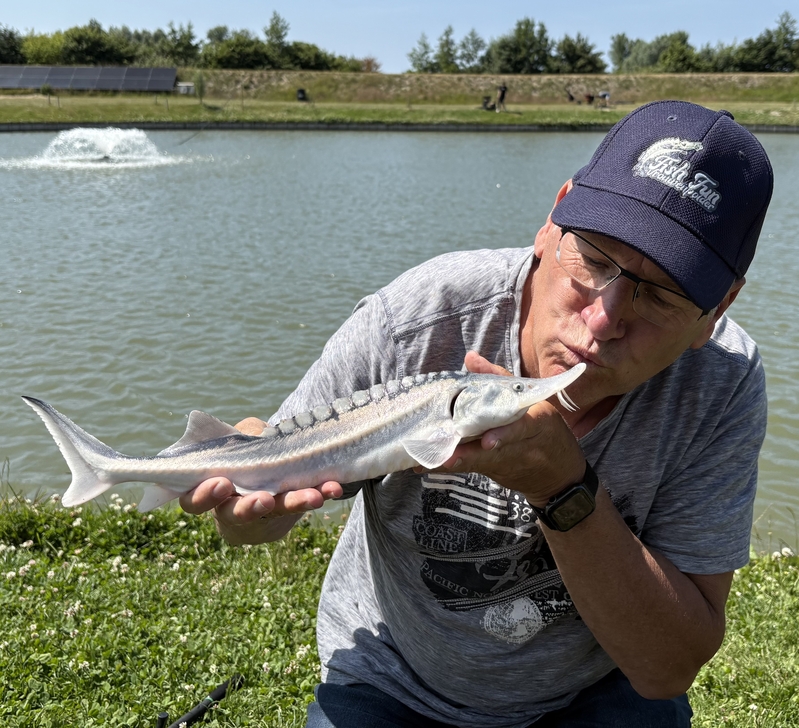Our fish
Belouga
The European Huso or beluga (Huso huso) is a sturgeon that lives in the wild mainly in the Caspian Sea and the Black Sea.
The largest ever seen was 8.6 metres with a weight of 2,700 kilograms. This makes the Beluga the largest in the sturgeon family.
This sturgeon can be recognised by its large, blue-grey colour and a prominent, large mouth suitable for hunting fish. Beluga sturgeons can grow very old, up to 150 years.
As with the white dolphin, the name 'beluga' comes from the Russian белуга, which is a derivative of belaya, meaning 'white'.
The beluga sturgeon is also called the European Huso, not to be confused with the European sturgeon, as it is from the Acispenser family (like our Baerri sturgeons) and not from the Huso family.
The eggs of the European huso are used for the famous beluga caviar, a very expensive type of caviar.
Often best caught on: pellets, herring or smac.
It is advisable to also make a small feeding spot around 5-6 metres from the shore, as the beluga usually sits a little further from the shore than the other sturgeons.
Terug



